After the Great Wall and the Tomb of the Emperor of the Qing Dynasty, an enigmatic and miraculous discovery made in China is the “Longyou Caves.” There is no historical record of these caves in the books and no information about their creator. They are a series of 24 large artificial sandstone caverns located on Phoenix Hill, near the village of Shiyanbeicun on the Qujiang River in Longyou County, Quzhou, Zhejiang province, in Eastern China.
The caves are believed to be around 2,000 years old before the creation of the Qin Dynasty in 221 BCE and are one of the largest structures excavated in human history. However, they also represent a real mystery that has been puzzling researchers ever since.
Examined by archaeologists, engineers, architects, and geologists from all over the world, none have managed to find out how they were built, by whom or why. It is only known that they were first discovered in 1992 by a local villager who set out to drain some ponds which locals believed to be bottomless. There were many ponds or rocky pools in the area near the village of Shiyanbeicun that according to legend were “bottomless” their depths went on forever and there were also certain ponds with no fish in. So the villagers decided to test the legend by draining a pond with a hydraulic pump and what they discovered was that the ponds were actually flooded ancient man-made caverns.
Longyou Caves
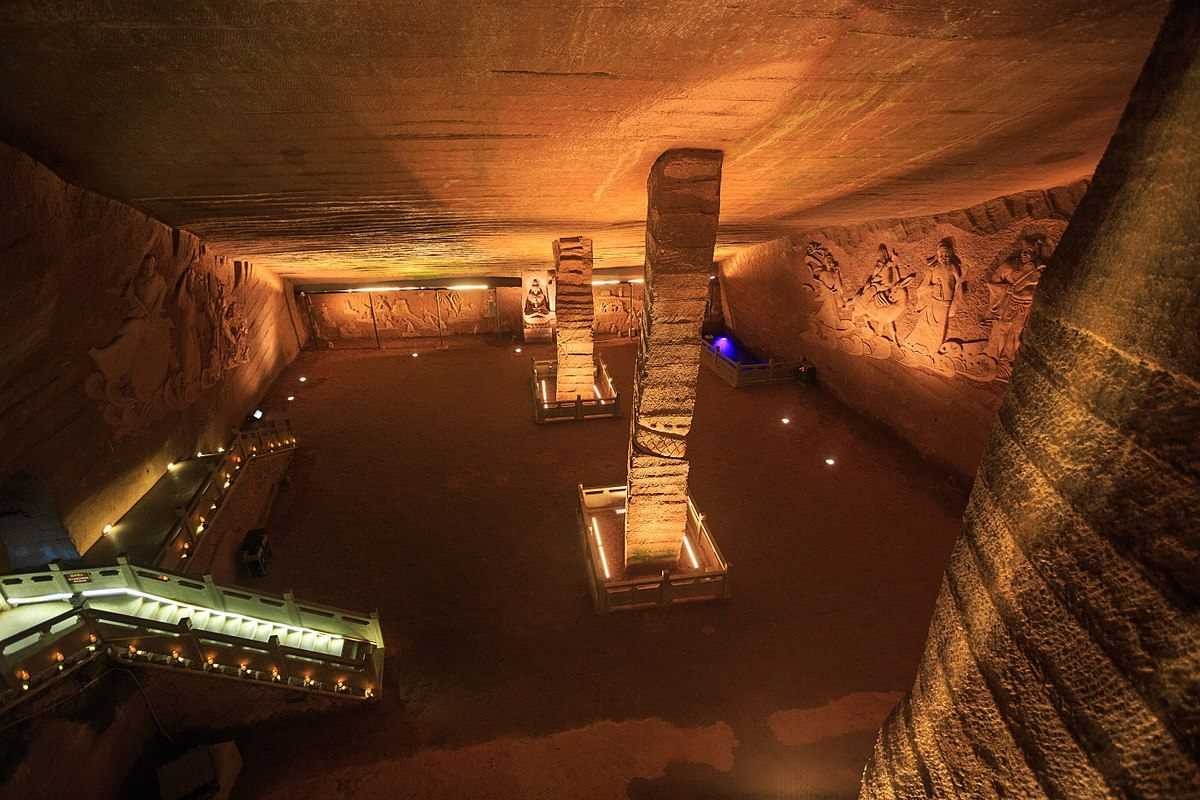
Longyou Caves. Image credit: Chinaculture.org
Longyou Caves covered the area of 30,000 square meters, and each cave is about 30 meters deep. Each cave consists of rooms, bridges, ditches, and pools. Siltstone pillars support the structures, and everything is decorated with chisel motifs of parallel lines. There is only one of the caves that has been opened to tourism and can be visited, decorated with the figures of a donkey, a bird, and a fish.
It is estimated that approximately one million cubic meters (35,314,666 cu ft) of rock had to be removed for the construction of Longyou Caves. A simple calculation would show that around 1000 people manpower would be required to work day and night for six years to complete the entire excavation, which is really impressive.
The most intriguing thing is that no tools of any kind have been found at the site, which could explain the perfect symmetry, precision and similarity between all the caves. There is also no record of them in the historical records, they are not mentioned in any manuscript, as if they were a secret. Nor has it been possible to determine what was done with the million cubic meters of rocks extracted, or where they could be taken.
Longyou carvings
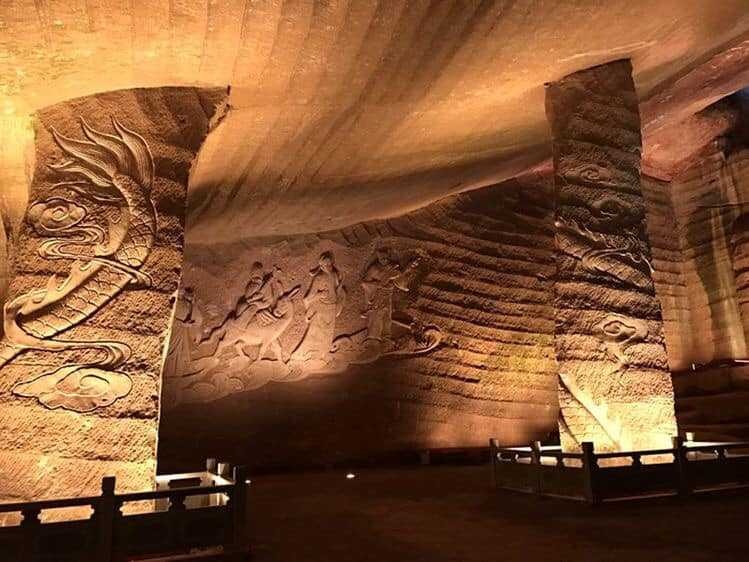
Carvings discovered within the Longyou Caves. Image credit: Zhangzhugang
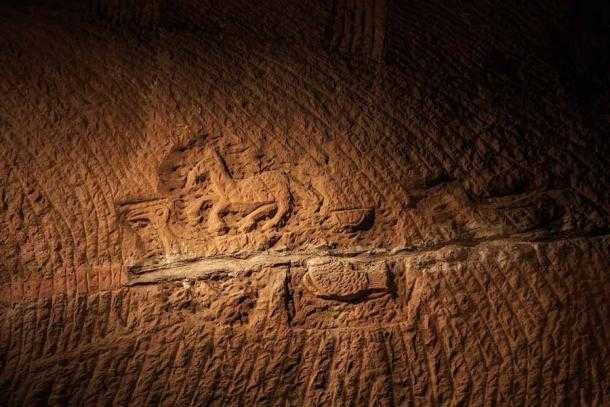
Carvings discovered within the Longyou Caves. Image credit: Zhangzhugang
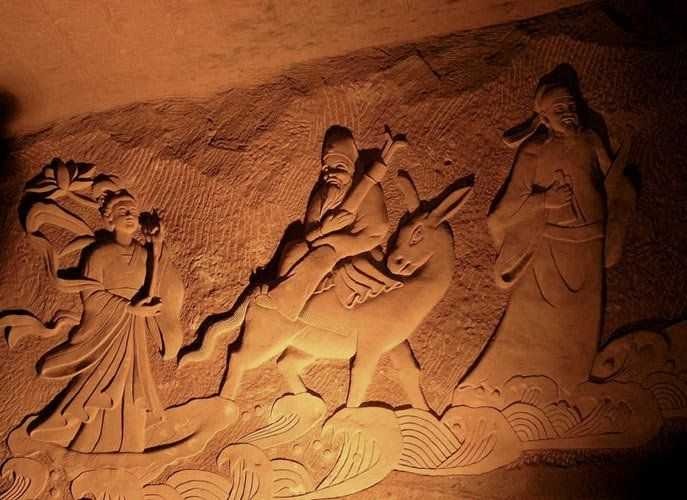
Carvings discovered within the Longyou Caves. Image credit: Zhangzhugang
Another mystery is precisely the parallel lines chiseled on all the walls of the caves, which cover absolutely every part of the caves like an absolutely perfect and symmetrical pattern. To create something like this must have required a colossal workforce. And why were all the walls chiseled?
The only clue is that they closely resemble the decoration of some ceramic pieces on display in the local museum, dating between 500 and 800 BC. At the time of being discovered, the caves were full of water, which had to be extracted, thus appearing the structures created by man. Initially, it was thought that they could be artificial ponds for fish farming. However, once all the water was removed, there was no trace of fish or other forms of life.
Curiously, most of the caves, which occupy just one square kilometer below the surface, are not connected in any way. They are contiguous but there is no way to pass from one to the other. This is despite the fact that some of the walls are barely 50 centimeters thick and, as mentioned before, most of the caves are exactly the same as each other in all aspects.
Stairs to longyou caves
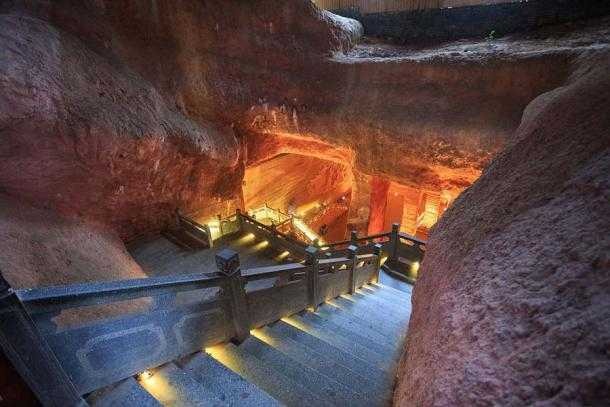
Stairs leading down into one of the once-submerged Longyou Caves. Image credit: Zhangzhugang
According to Yang Hongxun of the Archaeological Institute of the Chinese Academy of Social Sciences, at the bottom of each cave, the ancient builders would not be able to see what the others were doing in the adjoining grotto.
But the interior of each cave had to be parallel to the other, or else the wall would have been pierced when it was built. Thus, the measuring devices must have been very advanced. There must have been some provision about the size, location, and distances between the caves beforehand.
Modern measurements have revealed that the walls are the same thickness at different sections, with extremely exact precision. How they achieved this precision remains a mystery. And finally, it has not been possible to give a ‘logical’ explanation for its use. Some have suggested that they were monumental mausoleums, but no tomb has been found. Others say they were mines, but why would they bother to decorate some mines in such a precise way?
These caves were not built by some primitive people. Their design was standardized and carefully laid out in advance. It is the work of some advanced civilization with highly precise tools. Besides, the shape of the caves is rather unusual. The access was through a vertical shaft, or portal, with steps leading downwards. The ceiling was sloped and upheld with rock pillars.
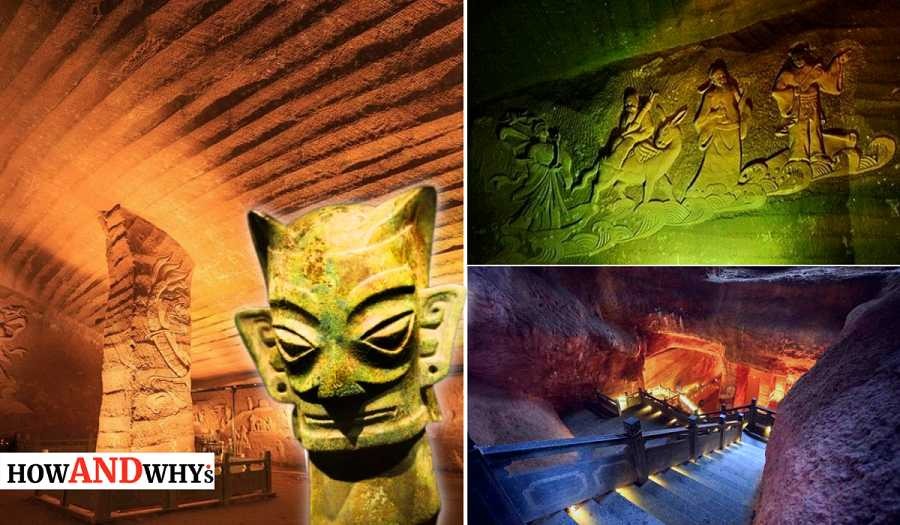
Leave a Reply